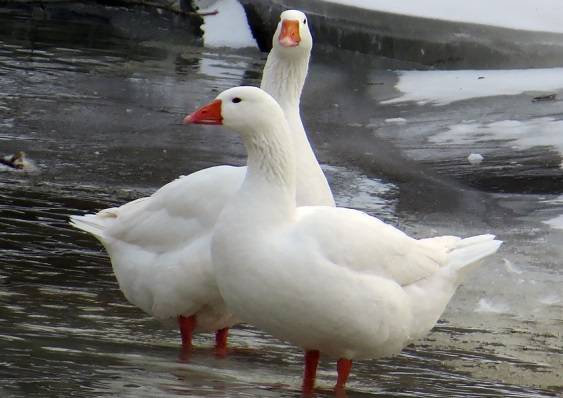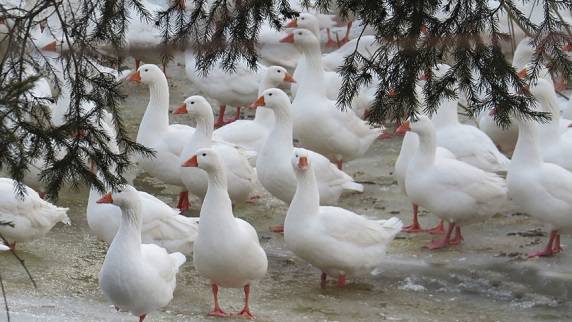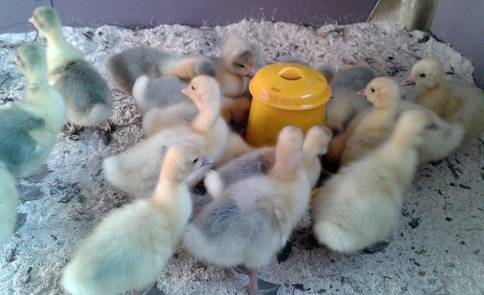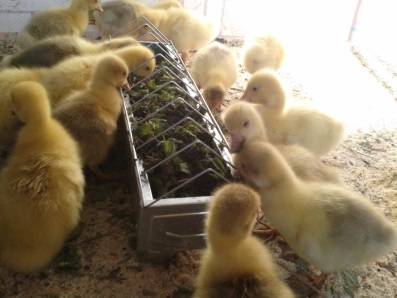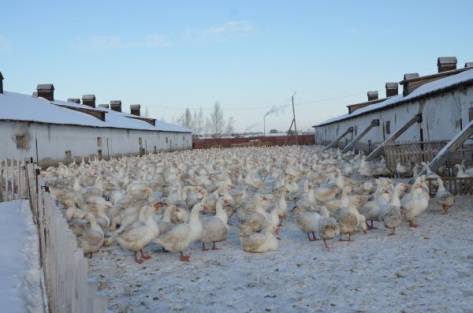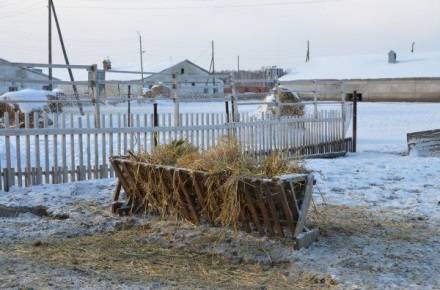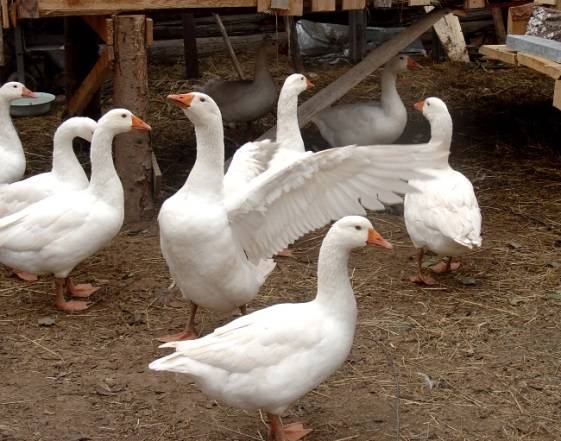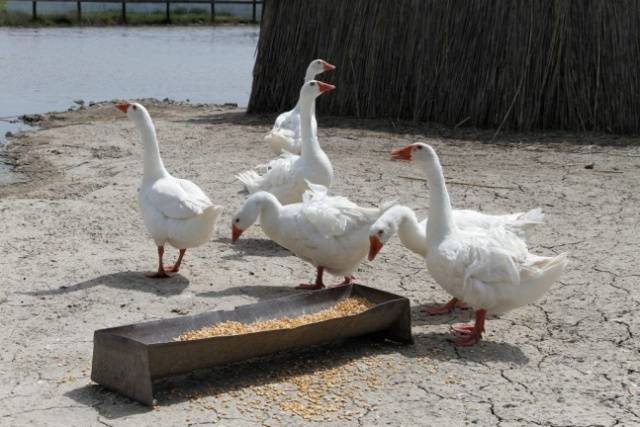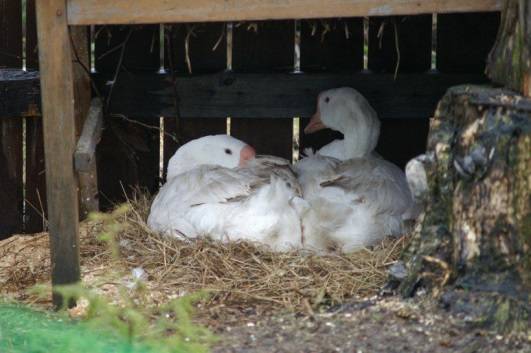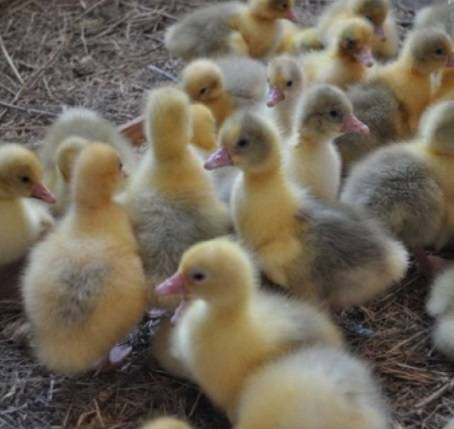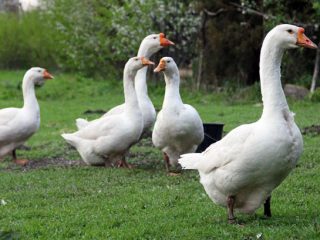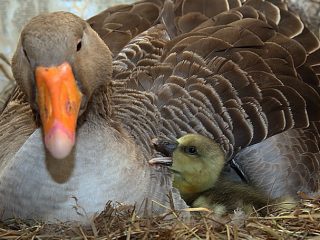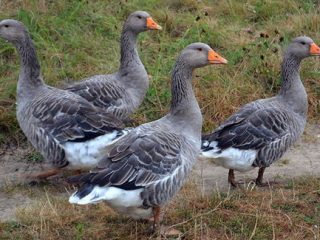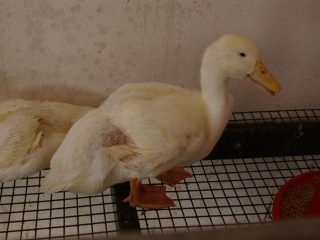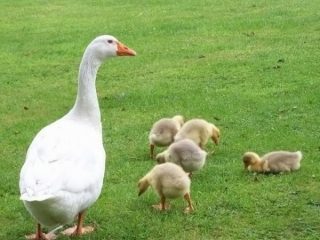Content
Contrary to first impressions, Governor's geese do not originate from pre-revolutionary times. This breed was developed quite recently through complex reproductive crossing of Shadrinsky and Italian geese. Work on breeding the breed has been carried out since the beginning of the 21st century. For 11 years, scientists from the Institute of Poultry Farming, Agricultural Academy named after. T. S. Maltseva and livestock specialists from the Makhalov breeding farm worked on the breed.
During the selection process, specialists selected for productivity, frost resistance, viability and unpretentiousness. The idea was a success. Governor breed geese do not need insulated poultry houses, live in spartan conditions and are able to quickly gain weight.
Description
The photo shows that Governor's geese have a compact body and dense build. A medium-sized elongated head with a straight profile. The beak is orange, wide, short. The eyes are oval, dark. The neck is short and thick. The back is wide, slightly arched. The wings are small, tightly pressed to the body. The tail is relatively long, slightly raised. The chest is wide and convex. The legs are short and well muscled. The abdomen is well developed. Metatarsus orange, medium length.
Color white. The plumage fits tightly to the body. In the description of the Governor's breed of geese, it is noted that they inherited their down from the Shadrinskys.The branched structure of the down allows geese of the Governor breed to live in the open air all year round.
The breed was bred as a meat and egg breed, but the meat characteristics of the Governor's geese are higher than those of the egg breed. The weight of the Governor's gander of the weighted type at 9 weeks reaches 4.35 kg, the goose at the same age weighs 4 kg. While egg production is only 46 pcs. for 4.5 months of egg laying. Some farmers, according to reviews, also receive down from the Governor’s geese. But the latter is a very labor-intensive task, given that it must be plucked very carefully from a living bird and only during molting.
Advantages
The breed turned out to be extremely successful and meets the needs of Russian farmers. Advantages of the Governor breed:
- good feedback on the feed (1 kg of weight gain requires 2.7 kg of feed);
- high hatching of goslings in the incubator (up to 95%);
- good preservation of young animals: on average 94% of goslings survive to adulthood;
- high viability of adult livestock;
- rapid weight gain in young animals;
- polygamy of ganders.
Often, even with a harem of 3-4 geese, the gander often gives preference to only one female. Governor's geese do not have this disadvantage. Thanks to polygamy, the Governor's gander pays attention to all its females. This increases the yield of fertilized hatching eggs.
After feather fouling, the spots disappear. They have nothing to do with autosex.
Flaws
In descriptions of the Governor's geese, a lot of adult birds are ignored. But we can assume that with a weight of almost 4 kg at 2 months, an adult gander of the Governor breed will weigh at least 7 kg.This suggests that despite high hatchability in the incubator, egg fertility is nevertheless low.
Also, nowhere is it mentioned that the Governor's geese want to become mother hens. In this breed, this property can easily be considered a disadvantage, since with low egg production, the birds could be allowed to hatch the goslings on their own.
But the Governor breed of geese was created for breeding in industrial poultry farms and the presence of a brooding instinct was not part of the tasks of the breeders when breeding the breed. Thus, for breeding the Governor breed an incubator is required.
Content
Photos and detailed descriptions of the conditions of keeping Governor breed geese can cause horror in an unfamiliar person.
At the “homeland” of the Governor breed in the Makhalov breeding farm, geese are kept outdoors all year round in pens between poultry houses. In case of severe bad weather or severe frosts, geese can take refuge in unheated buildings. The rest of the time, down to -25°C, Governor's geese live outside. There, in the pens, there are feeders with hay for them.
In the poultry house the floor is covered with deep litter. The room has natural ventilation. The drinking bowls are designed so that the geese can only stick their heads to the water. In this way, the litter is protected from moisture and remains dry.
During the non-productive period, that is, in winter, Governor's geese are fed once a day with oats. Water is also given only once a day. The rest of the time the geese quench their thirst with snow outside. For better absorption of feed, geese are provided with pebbles. In this case, hard hay and oats are ground in the stomach by gastroliths and are well absorbed.
At the beginning of the reproductive season, Governor's geese in the herd are given complete freedom to mate. But this does not apply to those birds that are used for further selection. Free mating is possible only for industrial herds producing offspring for slaughter.
But this method of keeping, as well as the photo of the process, confirms that there is not a word of untruth in the description of the Governor breed geese regarding their frost resistance and unpretentiousness. These are really very convenient birds to keep in a private home. They are especially good for beginners.
Diet during the reproductive period
If in winter Governor's geese can be fed once a day and only with hay and oats, then during egg laying it is impossible to get by with such a meager diet.
About a month before the planned breeding season, Governor's geese begin to be fed not only oats, but also other grains and legumes. The best option is compound feed for geese of egg-bearing breeds. This feed is already saturated with all the necessary vitamins and minerals.
If there is no specialized food, the geese are given ground grain of wheat, corn, barley, soybeans, and peas. At this time, alfalfa hay is better. When the grass begins to grow, the geese are switched to fresh green food.
This is especially true for raw dry wheat and legumes. Swelling in the crop, this food can clog the esophagus. If possible. It is better to boil the wheat.
In addition to grain and grass, Governor's geese need vitamin and mineral premixes. Pebbles are kept in a pen at all times.
Nesting grounds
Even if the Governor's goose is not languishing in the desire to hatch offspring, she will prefer to lay eggs in a secluded, quiet place where no one will disturb her. If there are no such places, they lay eggs anywhere. In this case, there is a high risk of losing products.
To make a nest for Governor breed geese, it is enough to make boxes with high walls and lay straw on the floor. Optimal option: the number of nesting sites exceeds the number of geese in the herd. If there are fewer nesting boxes, several geese may start laying eggs in the same box. In the case of collecting hatchery eggs, this situation does not matter. Knowing which eggs come from which goose is important if breeding work is being carried out.
Reviews
By spring, the geese were ripe and pleased with their eggs. Their eggs are very large, but they actually lay very few. It was enough for me though.
Conclusion
This breed is still little known in Russia. It is not particularly advertised among private owners, although in the photo the Governor breed geese look very attractive. At the Makhalov breeding farm, Gubernatorskie are the main source for the production of goose meat. Since geese are slaughtered there in large quantities, collecting down from slaughtered carcasses also becomes profitable. The down of Governor breed geese is highly valued abroad. But supply volumes must be appropriate. But private amateurs can add fluff to their blankets, pillows and even featherbeds.
